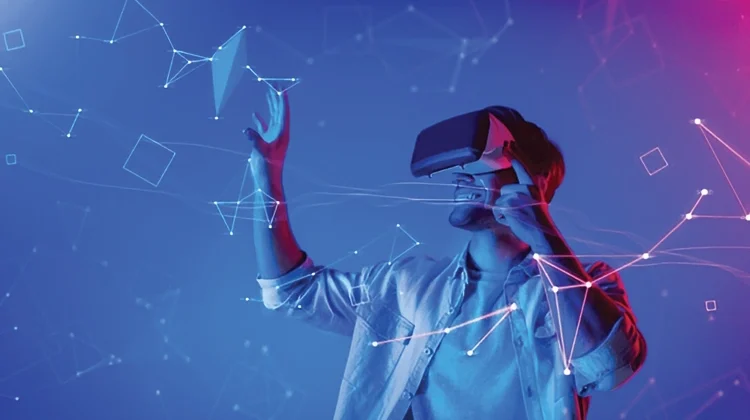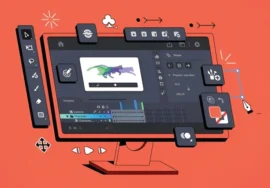
Beyond the Blueprint: The Future of 3D Design
3D design has revolutionized the way we visualize, create, and interact with the world. From architectural renderings to video game graphics, 3D design has become an indispensable tool in industries. But as technology continues to advance at an astonishing pace, the future of 3D design holds even more exciting possibilities.
Evolving 3D Design
To understand where 3D design is headed, it’s essential to appreciate its journey. In the early days, 3D modeling was a complex and time-consuming process, requiring specialized software and hardware. But, with powerful computers and user-friendly software, 3D design became more accessible to a wider audience.
Today, 3D design is used in various fields, including:
- Architecture and Engineering: Architects and engineers use 3D modeling to create detailed designs for buildings, bridges, and other structures. This allows them to visualize their designs from different angles and find potential problems before construction begins.
- Product Design: Industrial designers use 3D modeling to create prototypes of products, from cars and electronics to furniture and toys. This enables them to test the form, act, and esthetics of their designs.
- Video Game Development: Game developers use 3D modeling to create realistic and immersive game environments. This involves modeling characters, objects, and landscapes, as well as animating them to bring them to life.
- Film and Animation: Filmmakers and animators use 3D modeling to create special effects, visual effects, and animated characters. This allows them to bring their creative visions to life on the big screen.
Emerging Trends in 3D Design
Several emerging trends are shaping the future of 3D design:
- Artificial Intelligence and Machine Learning: AI and ML are being used to automate many aspects of the 3D design process, such as generating 3D models from 2D images or sketches. This can reduce the time and effort required to create complex 3D models.
- Virtual and Augmented Reality: VR and AR are being used to create immersive 3D experiences. This allows users to interact with 3D models more realistically and intuitively. For example, architects can use VR to walk through virtual buildings, and product designers can use AR to visualize how products will look in real-world environments.
- 3D Printing: 3D printing technology is becoming more affordable and accessible, allowing designers to create physical prototypes of their 3D models. This can help designers test the form, act, and esthetics of their designs before mass production.
- Real-Time Rendering: Real-time rendering technology enables designers to create realistic 3D visuals in real time. This is useful for video game development, where it allows developers to create dynamic and interactive game environments.
- Cloud-Based 3D Design Tools: Cloud-based 3D design tools are becoming popular, as they allow designers to access their projects from anywhere with an internet connection. This is useful for teams working on collaborative projects, as they can share and edit 3D models in real-time.
The Future of 3D Design
The future of 3D design is bright. As technology continues to advance, we can expect to see even more innovative and exciting applications of 3D design. Some of the potential future developments include:
- 3D Printing of Human Organs: 3D printing technology could be used to create replacement organs for patients in need of transplants.
- Personalized Medicine: 3D printing could be used to create personalized medical devices, such as prosthetics and implants.
- Space Exploration: 3D printing could be used to create tools and structures for space exploration.
- Fashion Design: 3D printing could be used to create custom-made clothing and accessories.
The Impact of 3D Design on Society
Beyond its technical advancements, 3D design is poised to significantly impact society in various ways:
- Enhanced Education: 3D models can make complex subjects more tangible and easier to understand. Students can explore historical sites, biological structures, or engineering concepts in immersive 3D environments.
- Improved Healthcare: 3D printing is revolutionizing healthcare by enabling the creation of personalized medical devices and prosthetics. Surgeons can use 3D models to plan complex procedures, and patients can benefit from more accurate and effective treatments.
- Sustainable Design: 3D design tools can be used to optimize product design for sustainability, reducing waste and minimizing the environmental impact of manufacturing processes.
- Accessibility and Inclusion: 3D design can be used to create accessible products and environments for people with disabilities. For example, 3D-printed prosthetics can be customized to fit individual needs, and 3D models can be used to create virtual tours of inaccessible locations.
Challenges and Considerations
While the future of 3D design is promising, there are challenges to overcome:
- Ethical Implications: As 3D printing becomes more advanced, ethical questions arise regarding the creation of realistic human replicas and the potential for misuse.
- Intellectual Property Rights: Protecting intellectual property rights in the digital age is a complex issue, particularly as 3D models can be easily copied and modified.
- Skill Gap: The rapid evolution of 3D design tools requires a skilled workforce. Education and training programs must be adapted to equip individuals with the necessary skills to thrive in this field.
Conclusion
The future of 3D design is a dynamic landscape filled with endless possibilities. By embracing innovation, addressing challenges, and leveraging the power of technology, we can unlock the full potential of 3D design to shape a better future for all.
As 3D design continues to evolve, it is essential for designers to stay up-to-date with the latest trends and technologies. By embracing these advancements, designers can create innovative and groundbreaking work that pushes the boundaries of what is possible.





